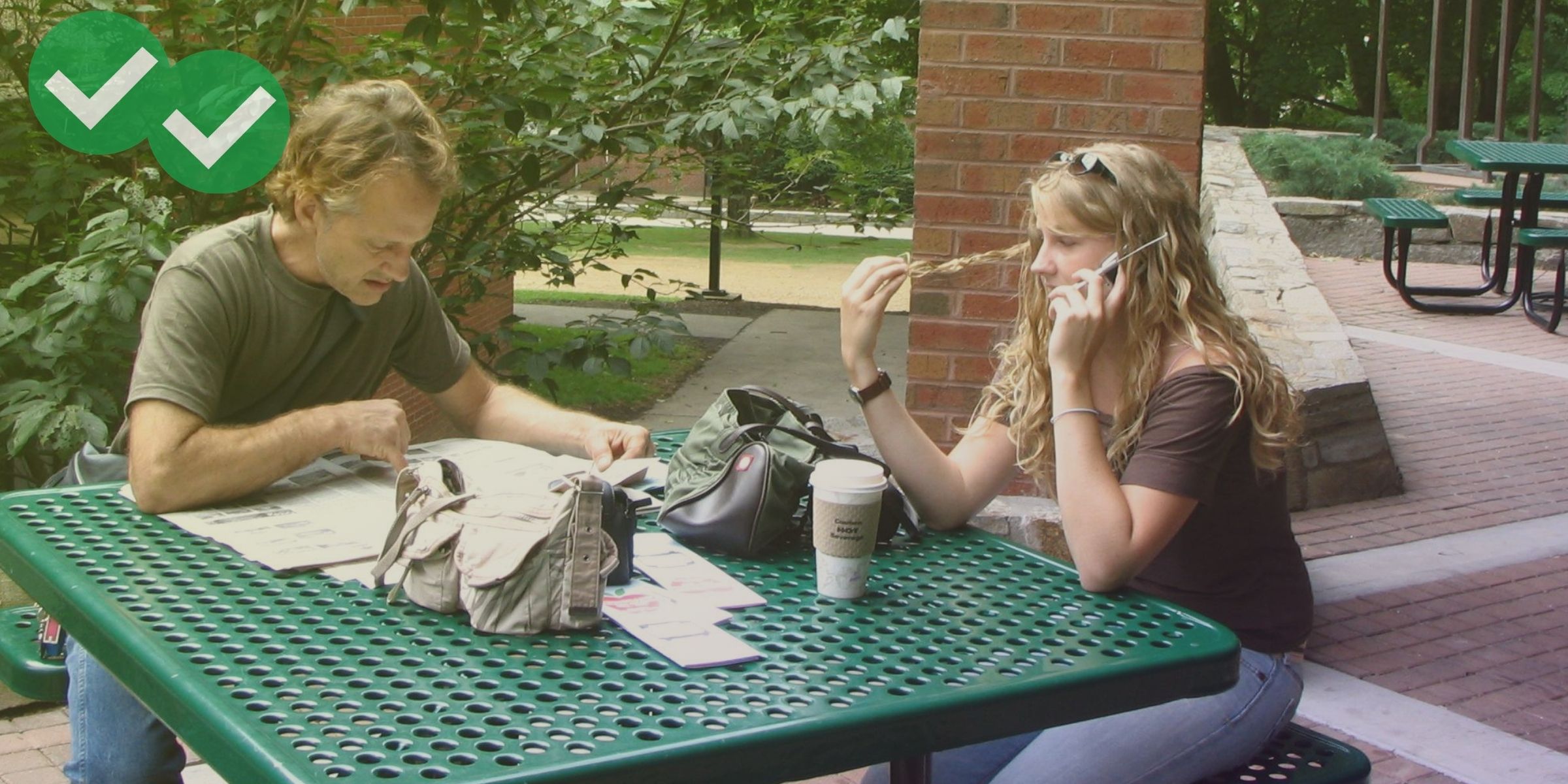
Here, we’ll look at TOEFL Speaking Task 2: The basics of this task on the TOEFL Speaking section, set of free resources for getting a top score on this second TOEFL Task, and a mock test for this task.
TOEFL Speaking Task 2 Overview
The second speaking task is the first of the integrated tasks and will be based on a topic related to campus life. First, you will read a short passage, which frequently takes the form of an announcement or clip from a newsletter. This passage is very short, usually about 100 words, and you have 45-50 seconds to read it (time varies depending on passage length). Then you will listen to a conversation in which two people offer their opinions about the announcement. The conversation will also be very short, rarely more than 90 seconds or so. Usually, the speakers will disagree with each other, so your answer should fully demonstrate conflicting opinions and should justify each side.
Although the topics are designed to be accessible to those with no experience in American universities, the more familiar you are with campus life, the easier it will be for you to understand the content of the materials. Topics include changes to buildings on the campus, to transportation, to university policy, to course structures and requirements, and other university news.
The question will then ask you to synthesize the information from the two sources by summarizing one of the speakers’ opinions on the changes. Note that your answer will focus on the dialogue; the reading passage is provided mainly for background information. So when you read the passage, pay attention to two things: first, what sort of change is being announced, and second, what two reasons are given for the change. That way, when you listen to the conversation, you will know what to expect, because the speaker will talk about those same exact topics.
Remember that the goal in question 2, unlike in question 1, is not to give your opinion, but to summarize the opinions of the speakers. Regardless of your opinion, you should present the opinions represented in the dialogue fully. That is, you will explain exactly why the speaker feels the way they do based on what you heard—what you think about the news or expect the student to feel should not be in your answer.
A Closer Look at this Speaking Task’s Structure
And for a more in-depth look at the structure of this TOEFL Speaking Task, with some tips and tricks on how to navigate that structure, see David’s tutorial on the structure of TOEFL Speaking Task 2. (David also offers a bonus activity for this speaking task here.)
TOEFL Speaking Task 2 Templates and Sample Answers
Templates are a great way to memorize little pieces of language and structure that can powerfully boost the score of yoru TOEFL Speaking responses. Magoosh offers a TOEFL Speaking Templates PDF that covers the entire section. And we have some additional TOEFL Speaking Task 2 templates as well:
- Flowchart-based template, with sample answer.
- Outline-based template, with sample answer.
- Dual Answers Template
If you want more guidance and practice material for the Speaking section, Magoosh TOEFL can help!
Mock Test for the First Integrated TOEFL Task (aka Task 2)
This mock test comes directly from Magoosh’s TOEFL Prep service. If you like what you see, consider subscribing, or signing up for a free trial. (No payment info required for the free trial!)
You will now read a short written announcement and then listen to a conversation on the same topic. You will then be asked a question about them. After you hear the question, you will have 30 seconds to prepare your response and 60 seconds to speak.
Click here to read the passage. (Give yourself 50 seconds of reading time, using a timer on your device, or an online timer app such as Google Timer.)
Next, click here to listen to to two students discussing the announcement.
The female student expresses her opinion about why she disagrees with the university’s new policy. State her opinion and explain the reasons she gives for holding that opinion.
(Use a recording app and timer on your device, or use web apps such as Online Voice Recorder and Google Timer.)
Preparation time: 30 seconds
Response time: 60 seconds





